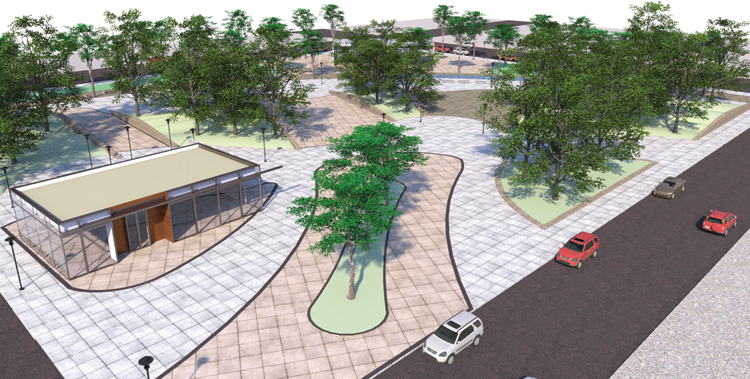What Is Detail Modeling?
Detail refers to the many elements that compose a typical scene. A model should include components and objects that provide viewers with context and scale typical of real-world settings. For example:
- For interior design models, this could mean including objects and elements, such as books, carpets, lighting fixtures, décor, or whatever details are found in the particular setting. It could mean including exterior or site details that can be seen through a window.
- For site models, this could mean using the right vegetation components, adding realistically detailed people to activate a scene, and having the right background context and typical street elements (Fig. 11.5, Fig. 11.6).
- For architectural models, this could mean including detailed building components and providing the structure with a sense of place, adding detailed fenestrations, including partial interiors visible through windows, using site elements for context and scale, and setting the building in a backdrop (Fig. 11.7, Fig. 11.8).
The processes in the following chapters are outlined in methodical order with specific goals:
- Create a full and rich model with as much detail as possible.
- Model quickly and efficiently.
- Maintain computer and model performance.
Fig. 11.5: Rendered park model (Shaderlight) without detail

Fig. 11.6: Rendered park model (Shaderlight) with detail, making it ...
Get Rendering in SketchUp: From Modeling to Presentation for Architecture, Landscape Architecture and Interior Design now with the O’Reilly learning platform.
O’Reilly members experience books, live events, courses curated by job role, and more from O’Reilly and nearly 200 top publishers.

